How to Properly Address a Cover Letter (2022)

Learning how to address a cover letter properly is one of the best ways to ensure that your cover letter is delivered and read in a professional manner. Customizing a cover letter with the name of the hiring manager is a great way to ensure the cover letter gets read.
When addressing a cover letter, it's key to know how to address the letter to the right person. And how to use the appropriate prefixes.
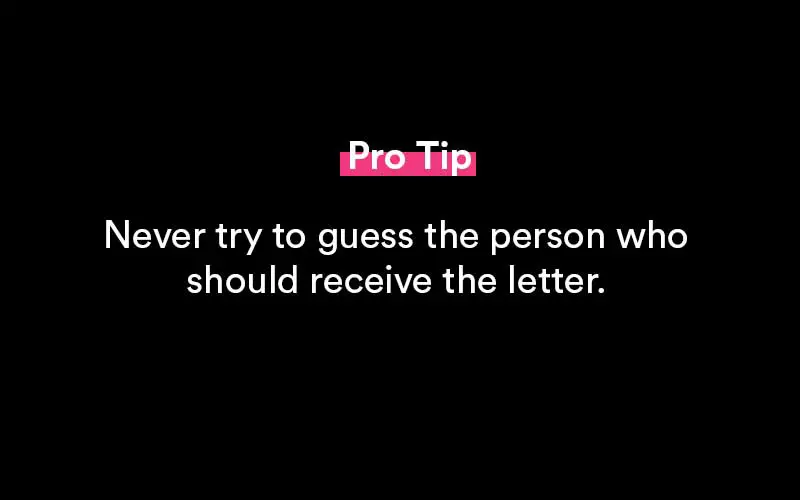
These prefixes are often dependent on knowing the gender of the hiring manager. Learn how to address your cover letter properly using the following rules.
Why is it important to address a cover letter properly?
Addressing a cover letter properly not only shows attention to detail sills. It shows the ability to perform research about the company, the role, and to write a professional letter to the manager who is placing the role.
Put simply, it leaves a very positive first impression upon the reader. And can be a pivotal part of your job search. Using generic greetings like "To Whom it May Concern" often shows a lack of professionalism.
When you don't know the hiring manager's name
If you don't know the name of the hiring manager who is placing the position, it's best to try and determine who it might be before picking a more generic greeting.
It's far more impactful to address the hiring manager by name, than to try and use one of the variations included below.
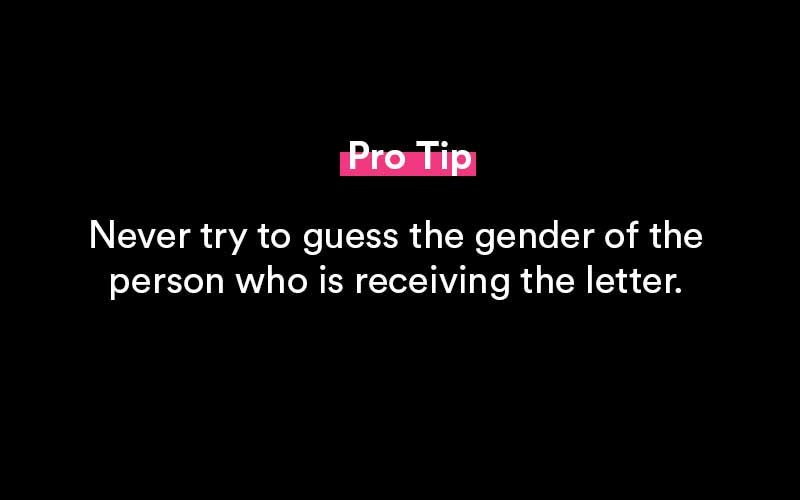
Using no salutation
It's possible to skip the salutation altogether. To do this, simply start your cover letter without any starting name.
A traditional cover letter would start by saying, "Dear Mr. Smith,"
Instead, simply begin your first paragraph.
Addressing with "Dear Hiring Manager"
Saying "Dear Hiring Manager" is one way to address a hiring manager when you're unsure of who is hiring for the position. Alternatives include saying, "Dear Human Resources."
It's best to understand that these are solutions that should be used when all other options have been exhausted.
These greetings are not an ideal cover letter salutation to use.
When addressing the team
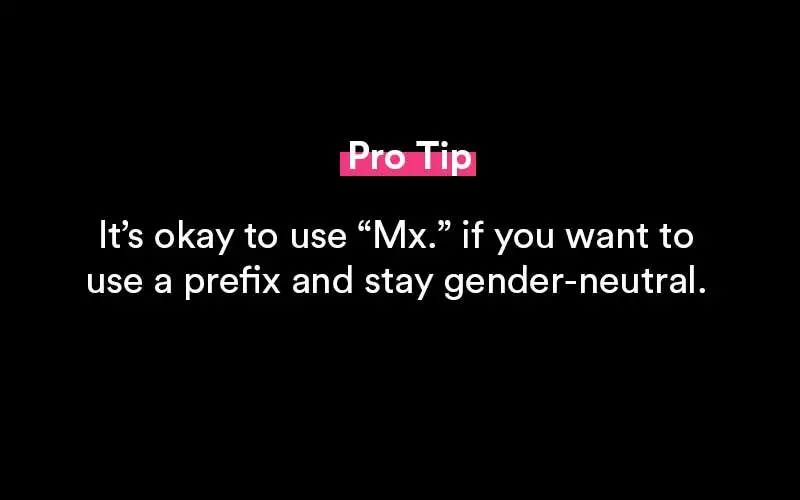
Addressing a team is another way to have a greeting or salutation without knowing who is hiring for the position. Here is how you could do that:
- Dear Product Team,
- Dear Marketing Team,
- Dear Human Resources,
- Dear Leadership Team,
- Dear Hiring Team,
- Dear Customer Service Team,
Generic greetings
Using generic greetings like "To Whom it May Concern" or "Dear Sir or Madam" is highly frowned upon. It's better to skip having any type of greeting in your cover letter.
The best alternatives to generic greetings are the above methods. They are the best way to address your letter when you don't know the name of the hiring manager.
Addressing the company or department
While it's possible to address a cover letter to a company name or to a department, it's better to use another method. Why? Because using the company name shows that you didn't perform any type of research regarding the role. And who you might report to.
When you do know the hiring manager's name
If you know the hiring manager by name, these are the correct greetings to use when writing cover letters.
Addressing the cover letter when you know their gender
Using "Mr." and "Ms." is the most common. Skip using "Miss" or "Mrs." as this may indicate, for a woman, whether they are married or not. It's not important to try to determine their marital status. Here are some examples of addressing your cover letter properly, when you know the gender of the hiring manager:
- Dear Ms. Algrim,
- Dear Ms. DeVille,
- Dear Ms. Smith,
- Dear Mr. Mullen,
- Dear Mr. Parkinson,
- Dear Mr. Smallville,
If not sure whether to use "mr" or "ms" then use the below method. Do not attempt to guess. It could insult some hiring managers.
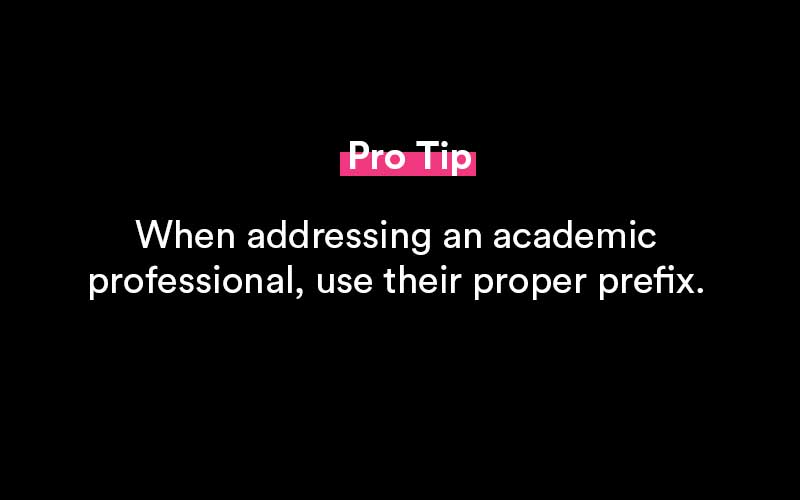
When you don't know the gender of the hiring manager
If you don't know the gender of the person you're addressing, it's important to skip the gender prefix associated with their name. This would be "Mr." and "Mrs." as an example. To do this, simply write the full name of the hiring manager or person you're addressing.
For example:
- Dear Susan Smith,
- Dear John Holt,
If you'd like to use a prefix but would like to use a gender-neutral pronoun, you can use "Mx." Here is what that should look like:
- Dear Mx. Holt,
The best method is to use the hiring manager's first and last name. It looks professional and reads more precisely.
Academic and professional titles when addressing the cover letter
When addressing a reverend, professor, sergeant, medical professionals (doctors), and other professionals.
- Dear Reverend Smith,
- Dear Rev. Smith,
- Dear Dr. McDonald,
- Dear Dr. McDonald Ph.D.,
- Dear Principal Haven,
- Dear Sergeant Ryan,
- Dear Sgt. Ryan,
- Dear Professor Arnold,
- Dear Prof. Arnold,
In these academic titles, do not include the first name of the professional you're addressing.
How to find the hiring manager's name
Here are simple methods to help you find the name of the hiring manager who is placing the position.
Scanning the company websiteCompany websites often have "team" pages. Go onto the company's website and go to the "About us" page or the "Team" page. This is frequently found at the bottom of the website, near the footer.
From here, try to see whether the job titles are listed under the name of the professional. Find the job title that fits the department that accompanies your job application. And then address them.
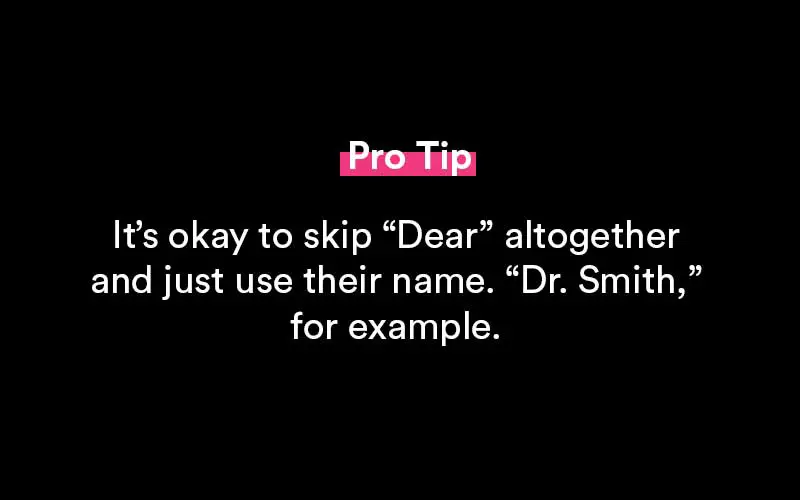
Frequently, a job posting or job ad is going to have the recruiter or hiring manager is placing the position. More frequently, it will be the recruiter. It's okay to write your cover letter to the recruiter rather than the hiring manager.
Using LinkedInLinkedIn is a great resource for finding the proper name of the professional who should receive the cover letter. Here's what to do.
Go onto LinkedIn, using the search bar, type in the company name.
From there, filter the employee's by department.
And then find the leadership team member who is listed.
A google searchIf you have the email address of the manager, it's sometimes feasible to place that email address into Google and perform a search.
For example, the email address [email protected], placing that email address into Google and seeing whether or not the name of the professional associated to that email exists.
Contacting the companyIt's possible to contact the company and ask the name of the recruiter or hiring manager who is placing the role.
Most companies will be helpful in this process. Remember that if you decide to do this, it may take a number of business days until you hear back. And this could slow your job application process down.
Look at the email addressThis might seem simple. If the email address is listed on the job ad, sometimes a professional will have their last name associated to it. In which case, it may make it easier to search the company website. Or to search LinkedIn. And try to determine their appropriate gender.
It's okay to address a cover letter to the wrong person. As long as the person who is being addressed works at the company and could be familiar with the manager who is hiring.
Tips for addressing your cover letter
Here are some short tips when addressing a cover letter and resume:
- Never guess the name of the hiring manager. Instead, do your research and determine who the right professional is.
- Only use a generic greeting and salutation when you have exhausted all other efforts.
- If a name is unavailable, use a title (e.g., Dear Product Team,).
- Avoid using "Miss" and trying to guess the marital status of the person you're writing to. Instead use "Ms." at all times.
Where does the name go?
When writing a cover letter, the name of the professional you're addressing should go after your personal contact information, the current date, and the contact information of the company (optional).
Here is how that should look:
Bren Smith, Product Management
323 Business Road
St. John, IL 60110
11/2/21
IT Hiring Manager
Apple, Inc
100 Infinite Loop
San Jose, CA, 94114
Dear Mr. Ryan,
I'm writing this letter to show my professional interest in the role of Product Manager.
Addressing the cover letter by email
When sending a cover letter by email. Both in the body of the email. Or as an attachment. You'll want to follow the same guidelines listed above.
Here is what that will end up looking like:
Subject line: Software Engineering Role
Dear Ms. Susana,
I'm writing you to show my interest in the Software Engineering role open at Apple. I've attached my cover letter and resume below.
Pro tip: It's okay to leave out "Dear" when addressing someone professional. This can sound more direct. It comes down to preference and whether you have the contact information of the manager placing the position.
Example cover letter
Bren Smith, Product Management
323 Business Road
St. John, IL 60110
11/2/21
IT Hiring Manager
Apple, Inc
100 Infinite Loop
San Jose, CA, 94114
Dear Mr. Johnson —
I'm writing to apply for an open internship opportunity. First, I'd like to say that my GPA in school was a 3.8 average. And that I was able to graduate with honors. I've included a number of recommendation letters that my professors have authored to speak to my passions for this industry.
While at school, I authored a number of freelance Ruby on Rails gems that have gained traction through GitHub. This was my first opportunity to write software that others could use. Since then, I've been very proactive in the open-source software community. Writing and publishing open-source code that addresses gaps in the market.
I'm keen on learning new ways to author software and address market gaps. I've decided XYZ Company is the best opportunity for me. Since it prides itself on addressing current market conditions and how to look at those conditions as opportunities.
Thank you so much,
Eric Anderson
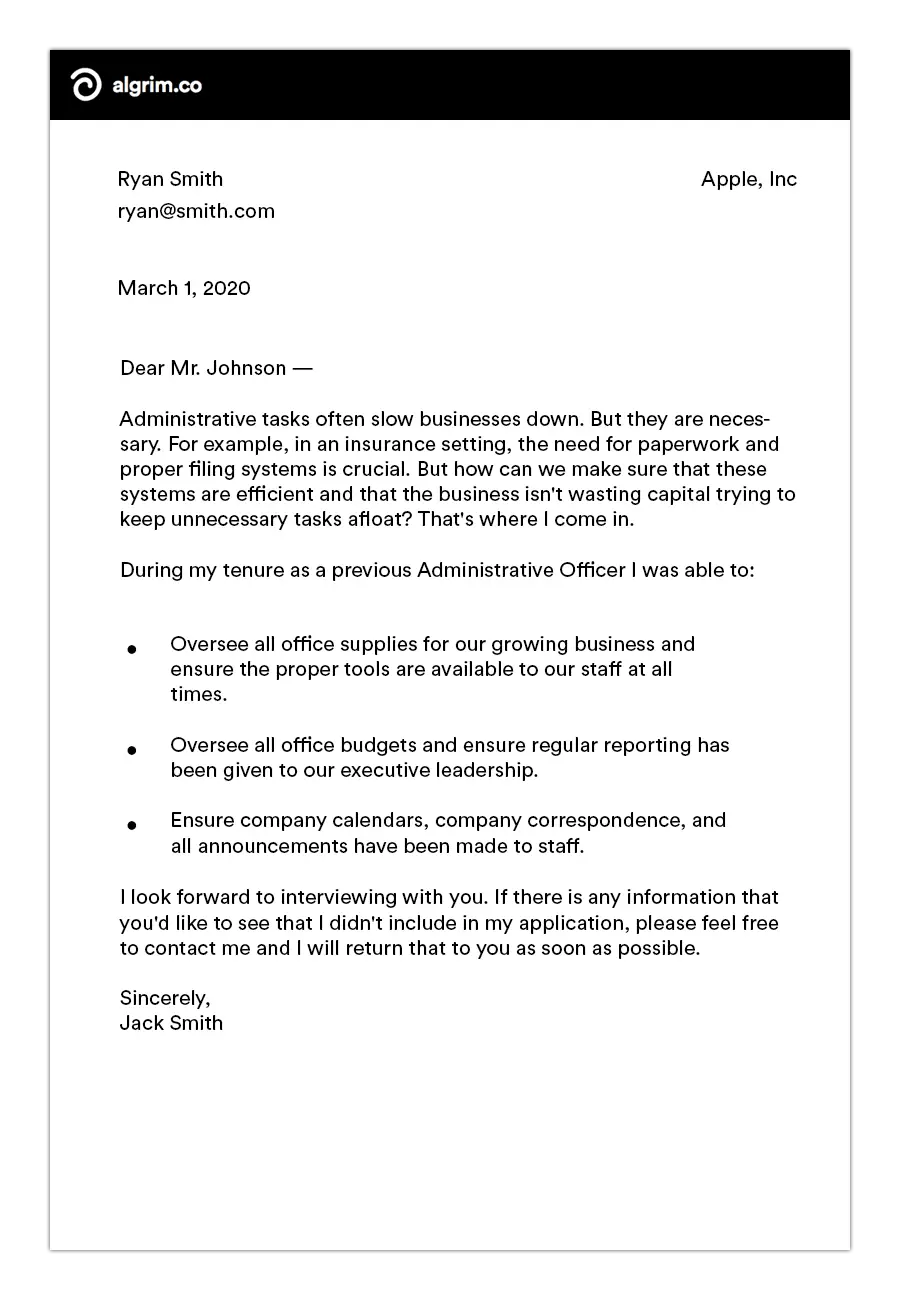
Popular Resources

Featured
35+ Phone Interview Questions & Best Sample Answers
Phone interviews have become a core part of the process when attempting to find a secured placement for an open position. Companies receive massive responses from potential candidates for any..

Featured
12+ Best Questions To Ask A Recruiter
Concerning a job search, you might receive numerous offers from your recruiters. Before you choose one, you need to assess all the conditions, for which it is vital that you know everything associated with the offered position..

Featured
Answering "What Makes You Unique" In A Job Interview
Answering this question during a job interview requires more than knowing why you are unique as an individual. Yes, the true scientific answer is made up of two main components: your..

Featured
250+ Ice Breaker Questions for Life
An ice breaker question is a question that’s asked from one person to another person in order to act as a conversation starter. It brings a connection...

Featured
10 Best Answers to "What Motivates You?"
Open-ended questions like “What motivates you?” can elicit a deer-in-the-headlights reaction from job candidates if they are unprepared. It’s a broad question and can leave the interviewer..

Featured
Answering "How Did You Hear About This Position" In An Interview
A lot of interviewers ask this question - how did you hear about this position? This way they can judge you if you are a passive or an active job seeker..

Featured
8 Best Thank You Emails After an Interview (Samples, Free Templates)
Writing a thank you note after an interview says a lot about you as a potential employee. Most notably, it says that you care about the opportunities presented..

Featured
Writing a Resignation Letter (How To Write It, Samples)
Writing the perfect letter of resignation is more of an art than it is a science. And we’re going to cover how to master that art form in this full guide..

Featured
How to End a Letter (Example Salutations, Sign Off's)
Knowing how to end a business note or email is an important skill to develop. It helps portray a sense of confidence, respect and tone to your message..
